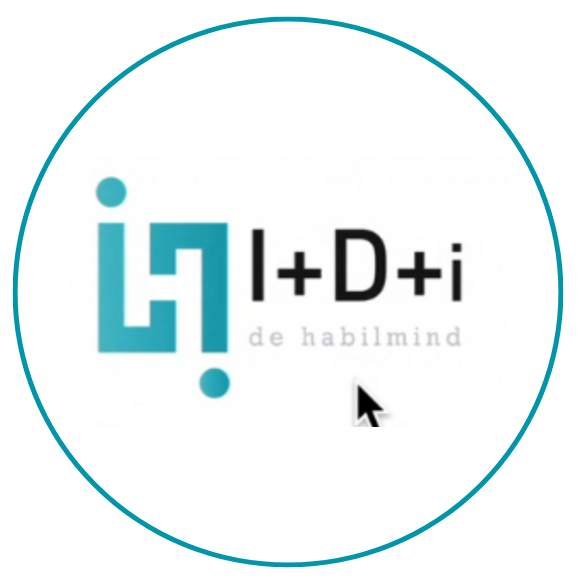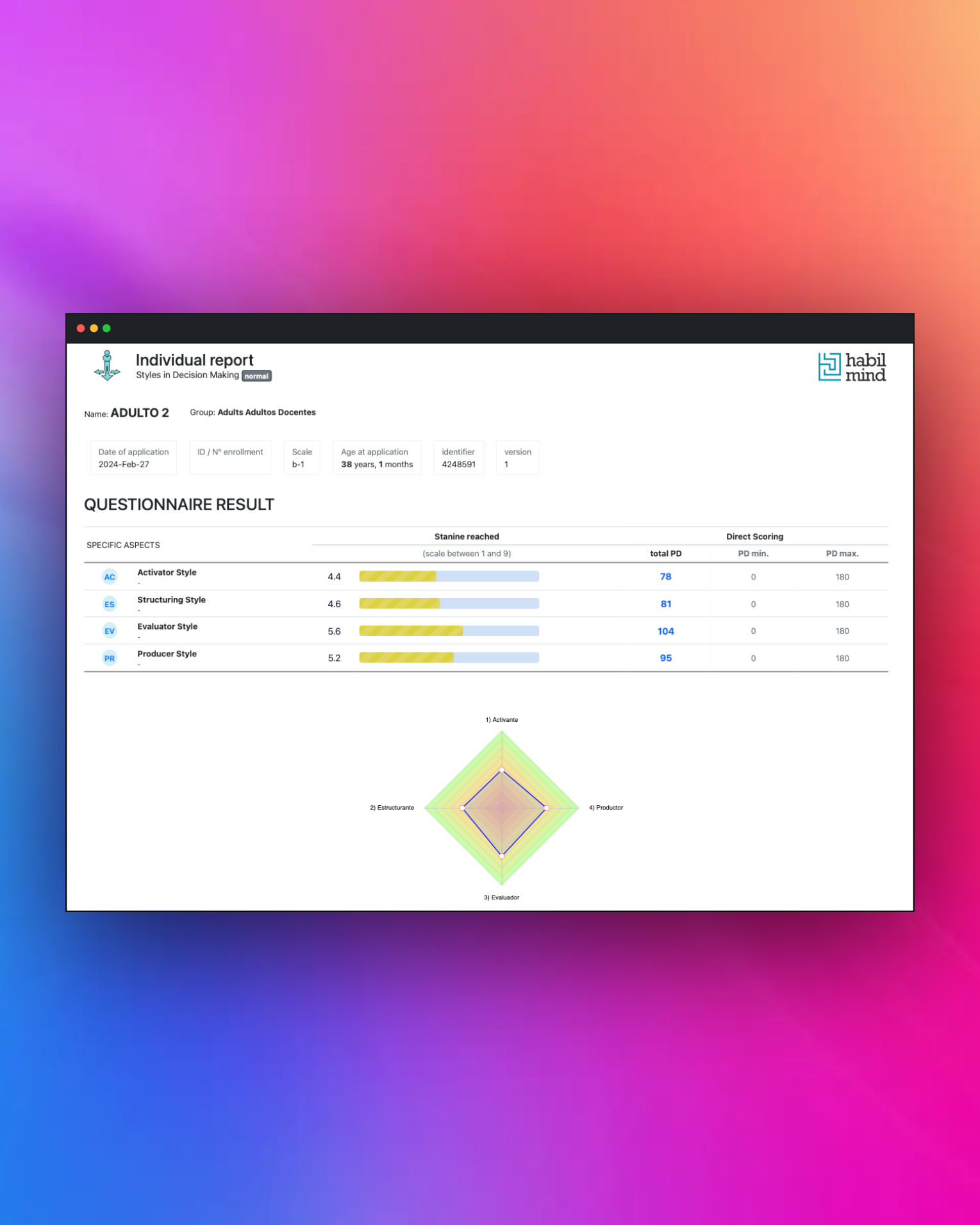Habilmind > Related to the Analysis and Improvement of Teaching Competencies > Decision-Making Styles
Decision-Making Styles
Self-assessment for leadership teams
Analysis of intellectual and emotional traits and tendencies that influence decision-making and problem-solving processes.
ℹ️ Application: Collective and individual
🕓 Duration: 15–20 minutes
✅
Applicable age: Adults

Authors

Isauro Blanco
Researcher and speaker specialising in cognitive development.

Habilmind R&D&I Team
Habilmind team dedicated to educational innovation.
What does your school obtain from this tool?
01
Provide
Information to enhance professional growth and leadership.
02
Promote
The integration of leadership teams.
03
Reflect
On personal problem-solving styles.
04
Prevent
Interpersonal conflicts.
05
Assess the impact
Through the re-administration of the tool.
Problems you prevent (or mitigate) when using Decision-Making Styles
1. Improved decision-making: Identifying different decision-making styles within the leadership or coordination team helps reduce conflicts and achieve more aligned and consensus-driven decisions.
2. Strategic alignment: Understanding decision-making styles enhances cohesion and alignment with the school’s vision and objectives, strengthening institutional leadership.
3. Efficiency in implementing initiatives: Addressing decision-making styles that may be causing delays improves the efficiency and effectiveness of executing educational projects.
4. Team motivation and commitment: Developing decision-making styles fosters more inspiring and engaged leadership, increasing team motivation and commitment toward achieving common goals.
On which platforms of the Habilmind Ecosystem
is this tool available?
Useful Links
Authors
Explore the contribution of the author and Habilmind’s R&D team in the development of the Decision-Making Styles test. Read more
Check prices and benefits instantly
Use the “Prices” button to view the available plans and choose the one that best suits your school.
Free trials are available for schools, colleges, institutes, universities, clinical psychologists, and researchers.









